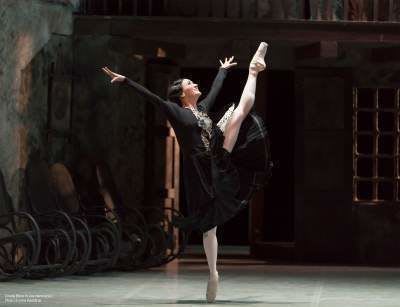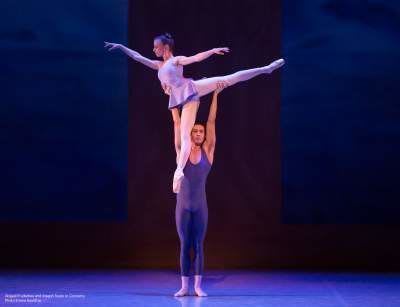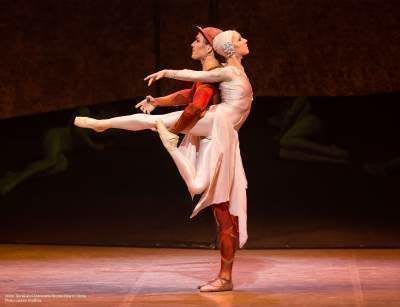Sir Kenneth MacMillan was one of the most distinguished ballet choreographers of the 20th century. Last year, to commemorate the 25th anniversary of his death, Kevin Hare—the Director of the Royal Ballet—invited six major ballet companies to perform his work on the main stage of the Royal Opera House.
Over the course of his illustrious and varied career, MacMillan created over 60 works, many of which are still regularly performed by ballet companies all over the world. The three pieces performed by Northern Ballet—Las Hermanas (1963), Concerto (1966) and Gloria (1980)—demonstrate the breadth and versatility of his talent.
The first piece is the most overtly dramatic of the three. Adapted from Federico Garcia Lorca’s play The House of Bernarda Alba (1945), Las Hermanas (The Sisters) focuses on a strict household in which five sisters are kept under the thumb of their overbearing mother. When the youngest sister seduces the eldest sister’s fiancé, tragedy ensues.
MacMillan was often drawn to dark material, making Lorca’s play an ideal fit for him. The House of Bernarda Alba is a brooding exploration of psychological domination and repressed desire, and these qualities are magnified by MacMillan’s striking choreography.
At the beginning of Las Hermanas, the daughters move in angular, synchronised steps, reflecting the mother’s power over them: they are her human marionettes. Their sexual repression is epitomised in the movements of the eldest daughter (guest artist Zenaida Yanowksy), whose awkward, tentative movements contrast with the sensual fluidity of her youngest sister (Ailen Ramos Betancourt) and the macho, lascivious physicality of her fiancé (Javier Torres).
Las Hermanas is a highly impressive piece, powered by richly detailed choreography and talented dancers. I was also struck by Nico Georgiadis’s oppressive set design, which captures the vortex-like quality of the all-female household.
The second piece could hardly be more different. When MacMillan took over the Deutsche Oper Ballet company in 1966, he choreographed Concerto with the express intention of showcasing the talents of his large ensemble. Unlike Las Hermanas, Concerto is a non-narrative work of classical dance, devoid of character and plot.
The three movements of the piece are superbly danced by the Northern Ballet ensemble, but I was particularly taken with the centrepiece—a pas de deux danced by Abigail Prudames and Joseph Taylor. Choreographed to Shostakovich’s “Piano Concerto No. 2 in F Major”, the second movement is swooningly romantic and utterly gorgeous.
The final piece, Gloria, is ostensibly based on Vera Brittain’s classic memoir Testament of Youth (1933), in which she writes about her experiences as a nurse during the First World War. She also grieves for her brother and fiancé, both of whom were killed in action.
Unlike Las Hermanas, which has a solid narrative structure and clearly delineated characters, Gloria is a far more abstract work. One would need to know about its literary origins in order to unravel the relationships between the three principal dancers. That being said, MacMillan’s choreography movingly contrasts Britain’s wartime optimism with the tragic destruction that would later follow.
Gloria’s wartime setting is conveyed through Andy Klunder’s arresting set design, which evokes No Man’s Land and the trenches to great effect.
This trilogy of short pieces reminds us of MacMillan’s considerable talents and allows Northern Ballet to demonstrate why it is one of the UK’s most respected and beloved dance companies.


